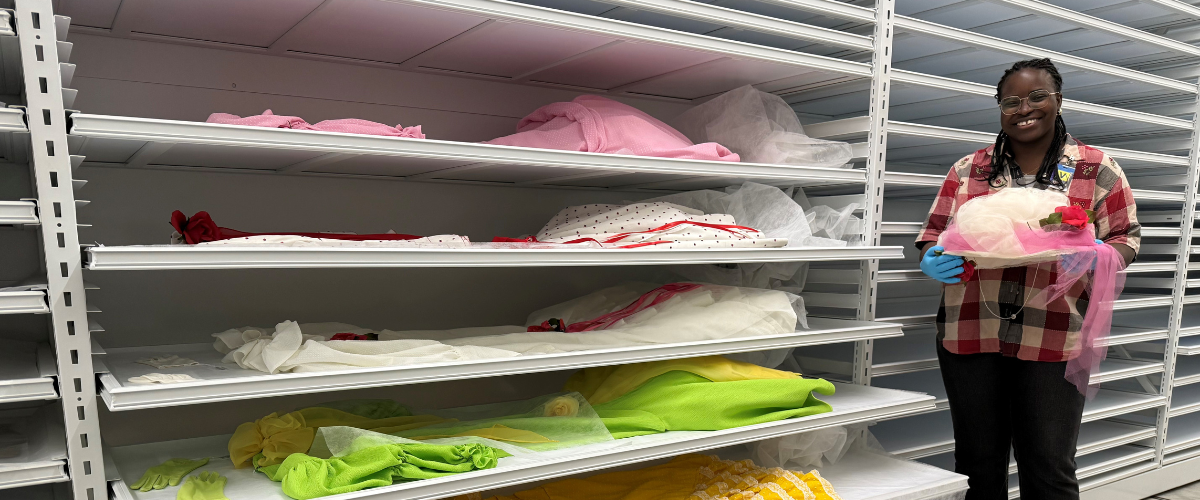A Trip Through Time: Hello Again, Klondikers!
Beracah Nwankpa, Daily Life and Leisure curatorial intern
Edmonton’s KDays, or Klondike Days as it was once called, hasn’t always been as we know it today—an extravagant affair of games, rides, fireworks, food and music. Its long history in Edmonton has seen it take on many forms; from a celebration of agriculture and industry in Northern Alberta during the late 1800’s, to being an homage to Edmonton’s role in the Klondike Gold Rush, which the 10-day event was eventually named after. This piece of Edmonton’s history was one of the many things I learned during my work placement term at the Royal Alberta Museum (RAM). Being a Bachelor of Science student double majoring in Computer Science and Anthropology at MacEwan University, I enrolled in a work placement course hoping to gain experience in the public history sector as part of my studies in Anthropology. During my placement at the RAM, I was responsible for cataloguing a collection of clothing and other items related to the history of Edmonton’s Klondike Days.
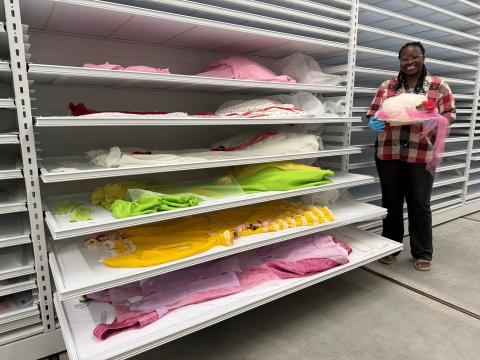
Donated in 2024 by Lashia Jericho, this collection features a total of 36 items including a scrapbook overflowing with memories and historical documents, two wigs, and six ensembles, each consisting of a beautifully crafted gown, a parasol, a small purse, as well as optional gloves and detachable petticoats. More than just some pretty dresses, the collection tells the story of one woman’s creative engagement with civic celebrations.
Born in Edmonton to Ukrainian parents, Lashia grew up surrounded by family tradition, learning a variety of creative and technical skills including knitting, crocheting, embroidery and sewing. As an immigrant family, life was challenging and did not often allow for greater luxuries. Yet, spurred on by the desire to sew dresses just as beautiful as the ones her classmates would sometimes wear, Lashia continued growing her skills and creativity. She found the process of choosing designs, making patterns, and selecting gorgeous fabrics for her perfect dress to be both an exhilarating experience and a source of solace in more difficult times.
As life would have it, Lashia’s passion for sewing and the skills she had honed over the years were the very things that supported her during her time as the face of the 1970 Klondike Days celebration! Since 1964, what was the Edmonton Exhibition (an agricultural fair) had been transformed into Klondike Days: an enjoyable period of socializing, partying, and wearing period costumes as a nod to the Klondike Gold Rush era, when Edmonton served as a gateway to the hopeful miners heading up north. From her own imaginative creativity, Lashia brought to life a collection of vintage-inspired ensembles that captured the function of Edmonton’s Klondike Days to recognize and pay homage to Edmonton’s history.
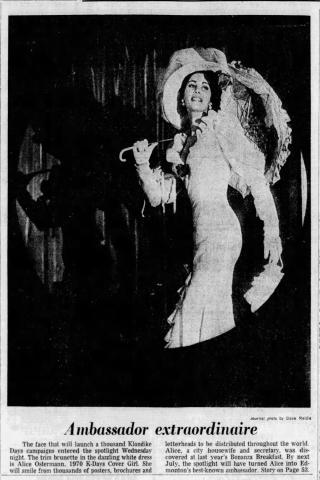
This incredible opportunity was presented to her during the festival’s opening celebratory “Bonanza Breakfast” event in 1969. Lashia (then known as Alice Ostermann) and her husband were in attendance at this event—thanks to her mother-in-law who had secured their tickets—when she was approached by the Edmonton Exhibition Association, the organizers of Edmonton’s Klondike Days, and asked to represent them during the association as the Klondike Days “cover girl”, attending events for a year and promoting Klondike Days across Alberta. Excitedly agreeing to the offer, Lashia’s mind quickly went to work generating new ideas for her Klondike costumes as the event’s new poster girl. In addition to her already existing set of skills, Lashia went the further mile to make her vision come to fruition. She learned to make hats through a millinery course, and adapted her parasols from children’s umbrellas. Her dresses were an expression of herself and in truth her efforts did not go to waste. While working full-time and taking art classes, as well as keeping house, Lashia made a total of 5 costume ensembles and from July 1970 to July 1971, her creations followed her across the province from one event to the next. She recalls this period to be a joyful time and a cherished memory. Lashia kept a scrapbook with photos, calendar pages, sketches, and clippings, to document her glamourous and busy year. It was a valuable learning experience through which she met many interesting people. At 84 years old, Lashia still enjoys using her 66-year-old Singer sewing machine. She is delighted that her Klondike creations have found a home at the Royal Alberta Museum.
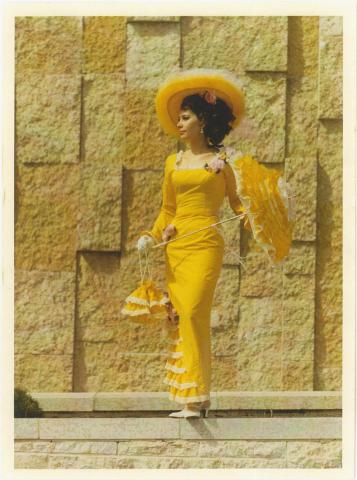
Handling Lashia’s collection of Klondike costumes and ephemera exposed me to an aspect of Edmonton’s history that I doubt I would have otherwise learned of or have been involved in to this extent. These items provide us with a perspective of how much change the seemingly constant aspects of our city might undergo within a single generation. I particularly found the scrapbook to most strongly showcase this idea through the numerous old newspaper clippings, pamphlets, brochures, posters and many other types of historical documents that had been preserved in its pages. It was a funny discovery to learn that Klondike Days attendees, and by extension Edmontonians, were referred to as Klondikers—a name I vote we bring back.
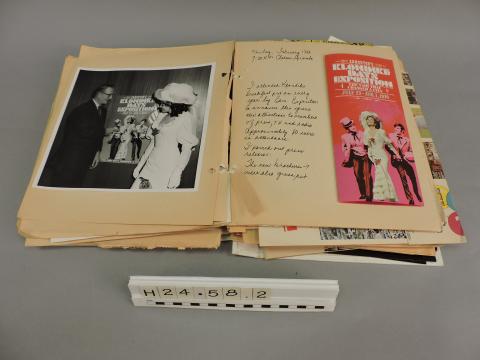
Although the nature of KDays might have taken many forms since its inception, its underlying function as an event that fosters socialization and celebration for Northern Albertans remains the same.
I am grateful that I was able to work on this particular collection during my work placement term. It provided me with the opportunity to be fully involved in the post-acquisition curatorial process from start to finish. I gained in-depth knowledge of the general processes involved in the cataloguing, management, and storage of items in the museum's collection while also gaining additional skills such as records management using a collections management software, item naming and description, and preventative storage and conservation methods implemented at the RAM. This experience is truly an invaluable addition to my studies in Anthropology and to my future work within the sector of public history. Overall, my involvement with this acquisition allowed me to engage in work that supports the RAM’s objective of nurturing and sustaining the conservation activities that celebrates and shares the long history of Alberta, its people, and the land.
I hope all you Klondikers have yet another enjoyable KDays season this year!
